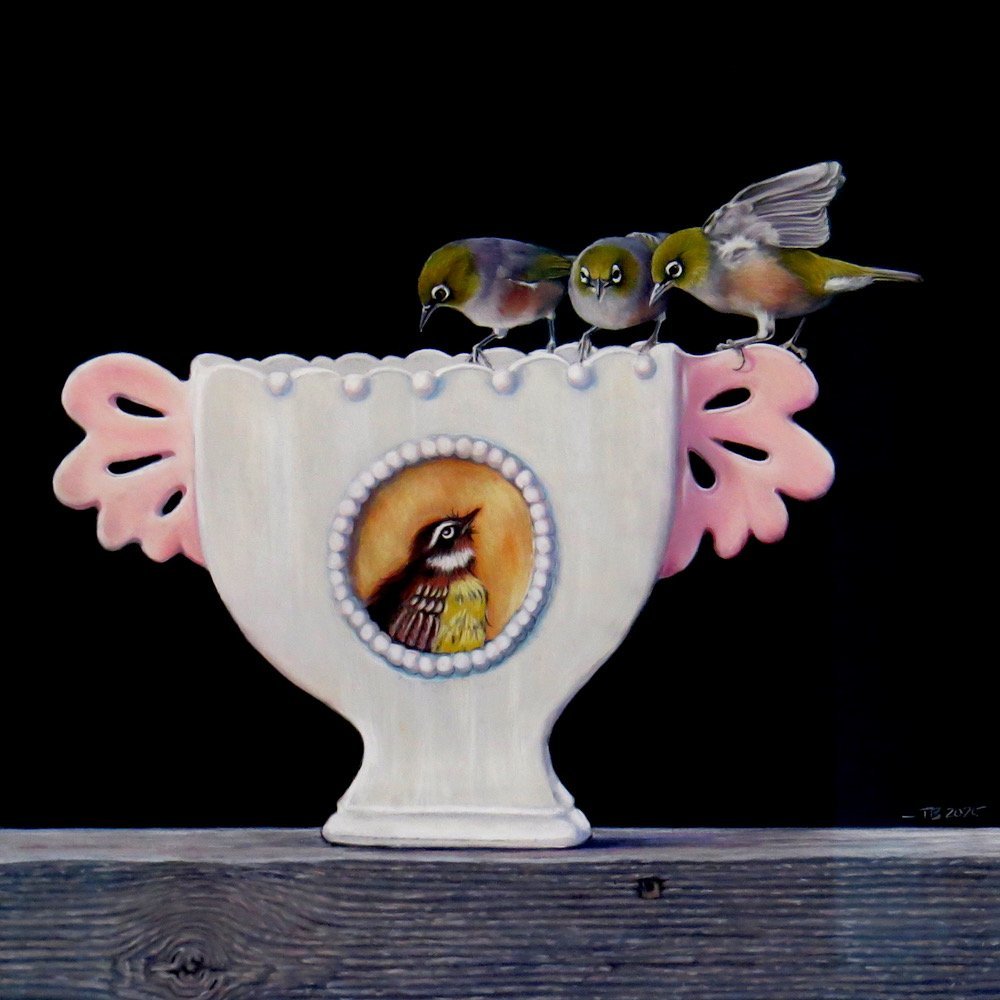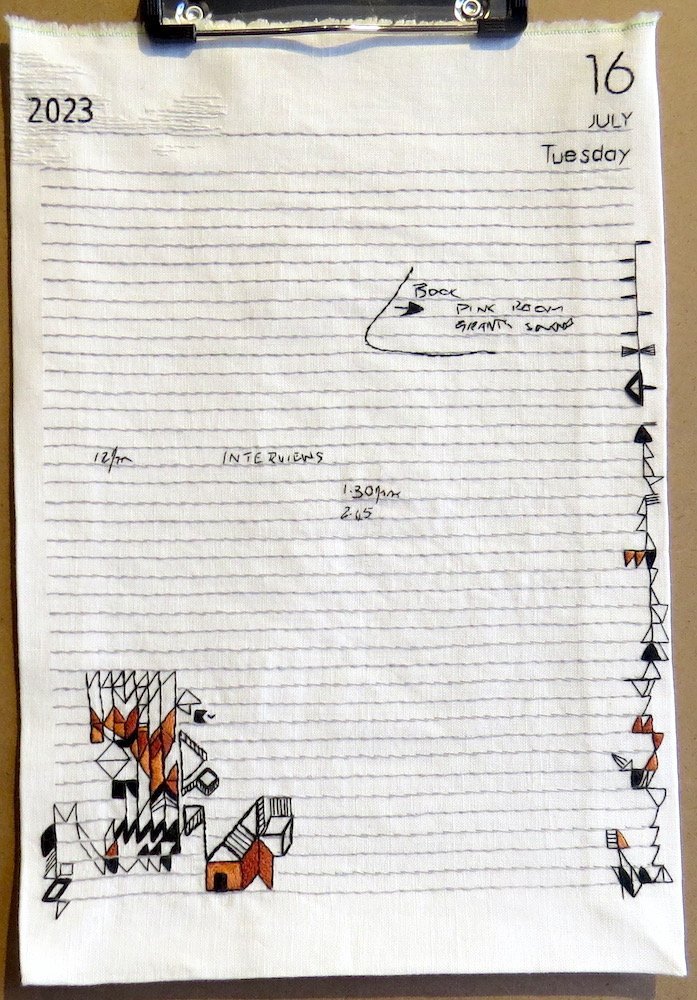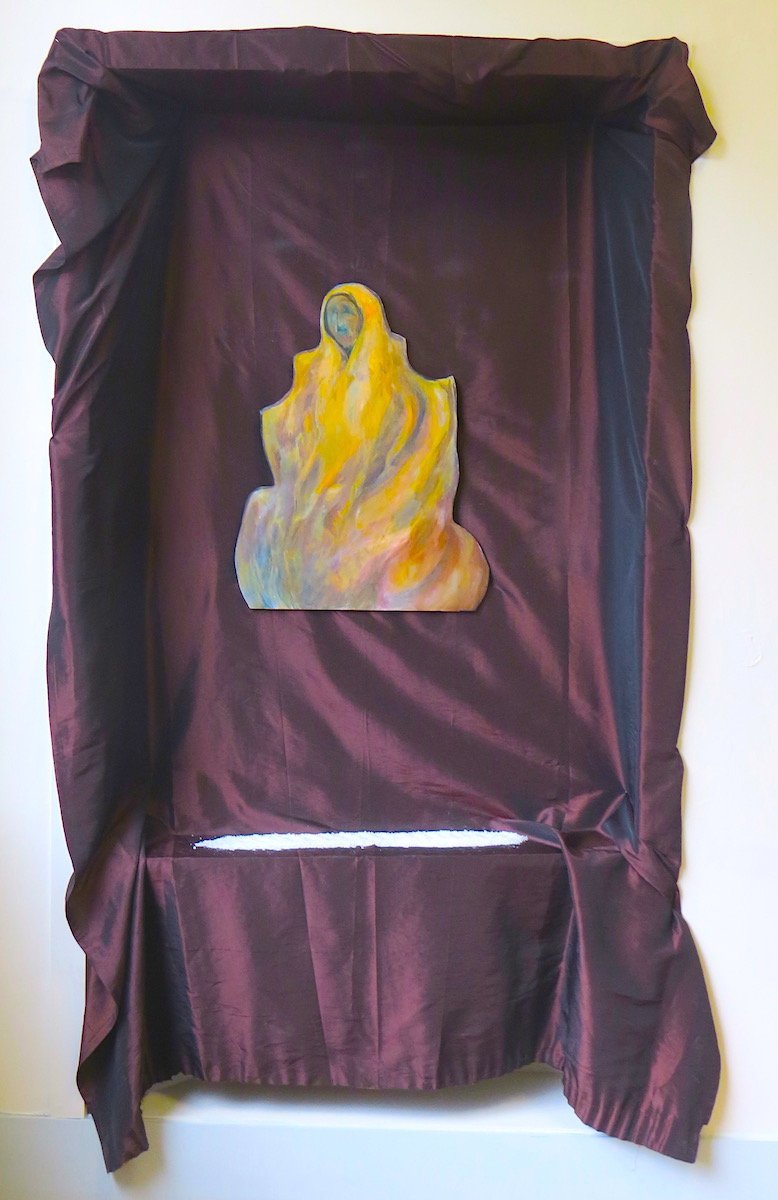
(The Artist’s Room)
"Flights of Fancy" is a joint exhibition at The Artist’s Room featuring work by graphite and pastel artist Tessa Barringer and ceramicist Debra Powell. The works complement each other perfectly, playing off each other in their common subject of New Zealand birdlife.
Powell’s stoneware vessels, mostly in the form of friendly curved "fancy vases", are decorated with hand-painted glaze. The ceramics feature cameos of birds placed against a plain or occasionally heavily decorated background. The works are have a wry humour, with the birds presented as portraits filled with character rather than precise photorealistic images. In pieces such as the broad vase "Kourarini (Goldfinch)" the bird stares from its central circle with an attitude halfway between an ancestral portrait and a selfie.
In contrast, Barringer’s depictions of birds gathered and in flight are a startling indication of the artist’s ability to capture precise images through unlikely media. Pastel pencil has been predominantly used to create works that have a photographic precision and the lush warmth of oil paintings. The strong eyes and delicate feathers are beautifully rendered, and works like Crescendo perfectly capture the split-second moments of birds in flight.
The exhibition is nicely tied together by the aptly named In Cahoots, a Barringer work featuring an image of one of Powell’s vases.

(Olga)
Lisa Wilkie’s exhibition at Olga is an intriguing recollection of days passed and days passing.
Using embroidery as her medium, the artist has recreated pages from notebooks and "redacted" diary pages in linen and thread, the cotton and silk delicately picking out the to-do lists and reminders which chronicle each day’s activities. Above all, they show borderline doodles, the indication of time spent is the drudgery of daily activities. The pieces become a record of time lost, time wasted, time when the artist could have been doing more meaningful work.
Wilkie has turned this concept on its head with her exhibition. By a process of painstaking mark-making, she has used this "unproductive" source material as a basis for creative work. In doing so, she has doubled down on the meaning of "Marginalia", presenting the doodles and jottings at the edge of daily life in a medium so long pushed to the edge of the art world, seen as a domestic craft. This is work made in the corners of the day, when all the "important" work has been done.
The resulting display is a Proustian search for "temps perdu", a yearning nostalgia for the passing of days, presented in a novel and impressive way.

(Pond)
Pond Gallery has pulled off something of a coup in its latest exhibition, the group show "Adjectively Religious". Alongside the work of two impressive young artists is that of Dunedin master Jeffrey Harris. The work by the trinity of creators works together very well.
In the exhibition, the symbolism of Christianity, and in particular the Catholic church, is used as the basis of meditations about religion and faith. Harris’s work consists of three older pieces, reinterpretation of the crucifixion. These are presented in the artist’s bold expressionist style, and are captivating, especially the etching Small Crucifixion.
The other artists are not outdone by Harris’s work. Philip Kavanagh’s compelling oils on shaped board suggest jigsaw pieces in some cosmic puzzle, perhaps an indication of the human condition when faced with the possibility of an eternal truth. Our Lady Of in particular is an impressive piece.
Emily Esterline presents two sides to her art, with an installation evoking a supernal figure, the wings of an angel. Piles of sea salt represent purity, and alongside the use of fish-hooks also recall the profession of several of Jesus’s disciples. Elsewhere, her three gentle abstract works in church window-shaped frames excellently create the meditative calm which is at the heart of many religions’ prayers.
By James Dignan












